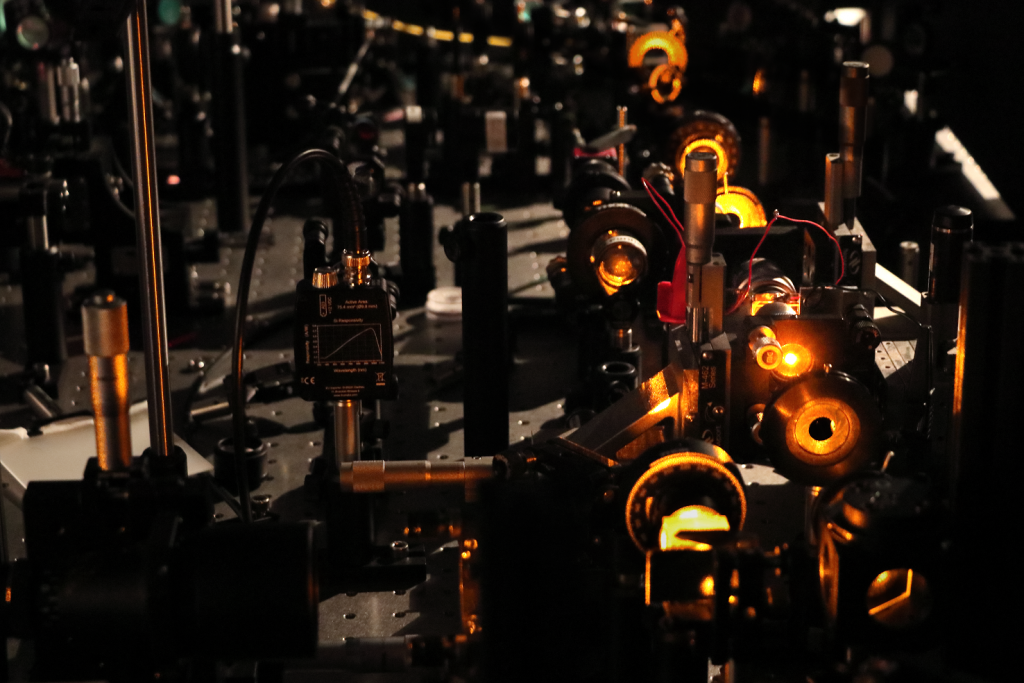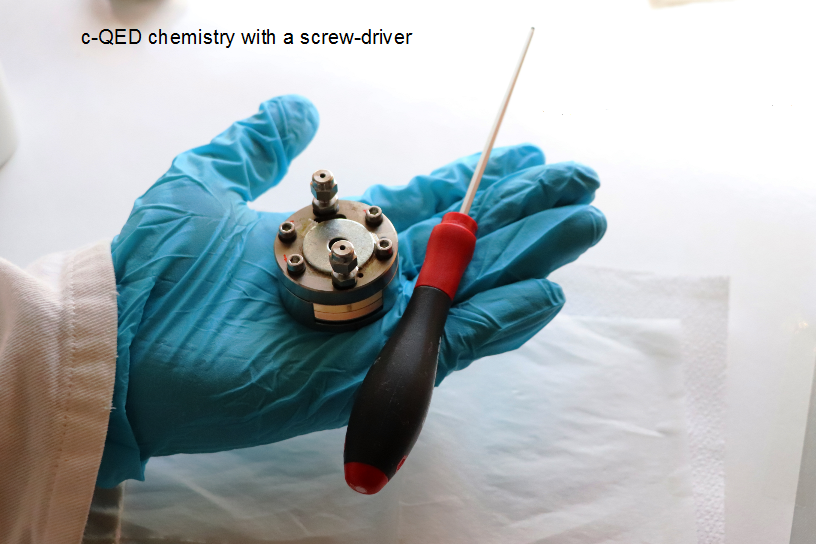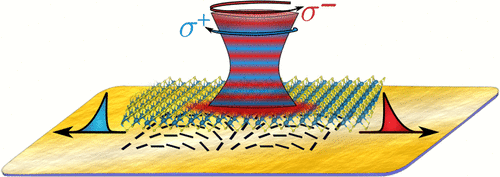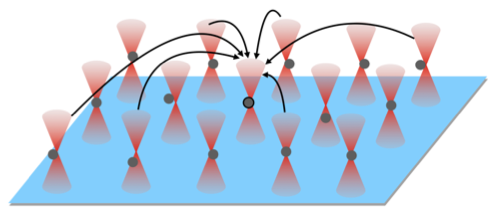Light-matter interactions form the core of the research of the laboratory. This research spans everything from optical forces, chirality and plasmonics to weak and strong coupling regimes, as detailed below. It is interdisciplinary in nature at the interface of physics and chemistry, sometimes even venturing into biological systems.
It involves the assembly of optical setups, the spectroscopic characterization both through static and femto-second time resolved measurements, theoretical simulations and fabrication of plasmonic nanostructures using state-of-the-art tools such as FIB. The vast zoology of molecules and molecular materials (the molecular tool-box) is exploited for given targets. The members of the group come from diverse backgrounds, typically physics, engineering and physical chemistry, which is a source of stimulating discussions. We collaborate extensively with other groups in Strasbourg and elsewhere on topics such as synthetic chemistry, catalysis, biophysics, solid-state and statistical physics.
Chemical and material properties under strong coupling (led by T.W. Ebbesen)
Light-matter interactions can be enhanced by placing a material in a confined optical mode that is resonant with a transition of the material. The interaction is typically classified in the weak and strong coupling regimes. In weak coupling, the radiative properties are modified, a typical example being the Purcell effect. As the interaction increases, the strong coupling regime can be reached when a molecular transition and a resonant optical mode whereby they exchange energy faster than any relaxation process. In such a case new hybrid light-matter states are formed. These states, having both features of light and matter, are known as polaritonic states. They are separated by the Rabi splitting ħωVR, as illustrated in the figure. The strong coupling process involves the zero-point energies of the cavity mode (vacuum field) and the molecular transition; therefore, it occurs even in the dark. The light-matter hybridization is expected to alter the material properties of the system. Indeed, over the past decade, we have demonstrated that by strongly coupling molecular transitions with a cavity or a plasmonic mode, properties can be modified such as chemical and biochemical reactivity, conductivity, superconductivity, work function and non-linear responses of materials.
Light-matter strong coupling in our lab involves either electronic and vibrational transitions depending on the property to be explored. A particularly promising route to modify chemical reactivity in the ground state is to strongly couple molecular vibrations using microfluidic cavities in the infrared (IR) region. The resonant coupling is achieved by tuning the frequency ωc of cavities (with a screwdriver) to a given molecular vibrational frequency ωv of a specific bond in the molecule resulting in the formation of two new hybrid vibro-polariton states VP+ and VP-. Vibrational strong coupling, VSC, induces very large changes in the thermodynamics of the reaction, much larger than the Rabi splitting which is typically on the order of kBT. Symmetry plays a key role as can be seen from the action of VSC on the correlation diagrams connecting the reactants and the products. This provides an explanation for the surprisingly large modifications in the reactive landscape under VSC. By tuning the cavity across various vibrations, it is also possible to identify which vibrational mode is involved in the reaction. VSC is therefore not just a new approach to chemistry, it can also act as a mechanistic tool. Chemistry under strong coupling is often called polaritonic chemistry or c-QED chemistry.
The properties of solid-state materials can also be modified by coupling phonons. Here, cooperative effects are used to overcome the often-weak phonon modes of many materials.
Chiral coupling, optical forces, stochastic thermodynamics (led by C. Genet)
Chiral coupling, both in the weak and strong regimes, opens fascinating perspectives in the study of light-matter interactions that we are currently exploring. This exploration is grounded in new experimental strategies and theoretical predictions that we recently made. This work involves a variety of topics such as stochastic thermodynamics, topological optics, hierarchical systems and quantum materials.
1) Chiral coupling in optovalleytronics: protection mechanisms for quantum degrees of freedom
Chiral strong coupling between plasmonic modes and atomically thin semiconductors (2D transition metal dichalcogenides) provides a unique capacity to map the valley degree of freedom onto directional optical modes. We called “chiralitons” the polaritonic states that enable such a mapping stemming from valley-momentum locking. One key aspect of our recent experiments is to demonstrate a cavity-based mechanism that protects valley populations and coherences at room temperature. We aim at fully understanding the fundamentals of such protected interaction dynamics in order to devise innovative optovalley-nanophotonic hybrids where the light-encoding of valley pseudospins leads to tailored and enhanced control of quantum degrees of freedom.
2) Optical forces and chirality: ergodicity and thermodynamics
In our effort to measure chiral optical forces on Brownian systems, we developed optical traps capable of trapping single chiral nanoobjects and functioning as thermally limited weak force microscopes with levels of resolution below 10-15 N. In this context, we are particularly interested in the analysis of the ergodic properties of optical traps. The fundamental link between chirality and thermodynamics, in particular using the methods of stochastic energetics is also explored. Our approach unfolds at the crossroad of chemistry and physics and leads to promising extensions when looking at how chirality can impact quantum stochastic thermodynamics.
 3) Stochastic thermodynamic protocols: optimization and quantum-classical analogues
3) Stochastic thermodynamic protocols: optimization and quantum-classical analogues
Optically trapped Brownian particles constitute ideal test systems for non-equilibrium statistical physics, with a great variety of stochastic protocols that can be implemented, both in the classical and quantum regimes. We recently demonstrated relaxation protocols optimized with respect to both their relaxation durations and their energetic cost. This led us to implement a classical analog of an open quantum system, namely a single quantum particle confined in a potential well and immersed in a thermal bath. Using classical stochastic processes in order to emulate the evolution of quantum systems paves the way to the possibility for realizing fully quantum evolutions using classical stochastic experiments.




